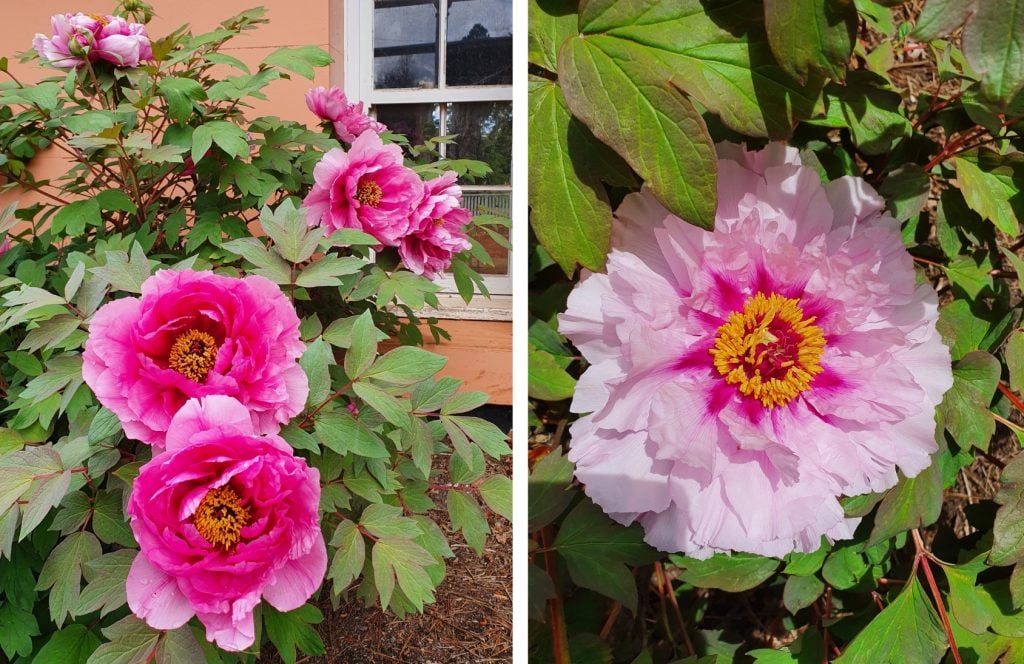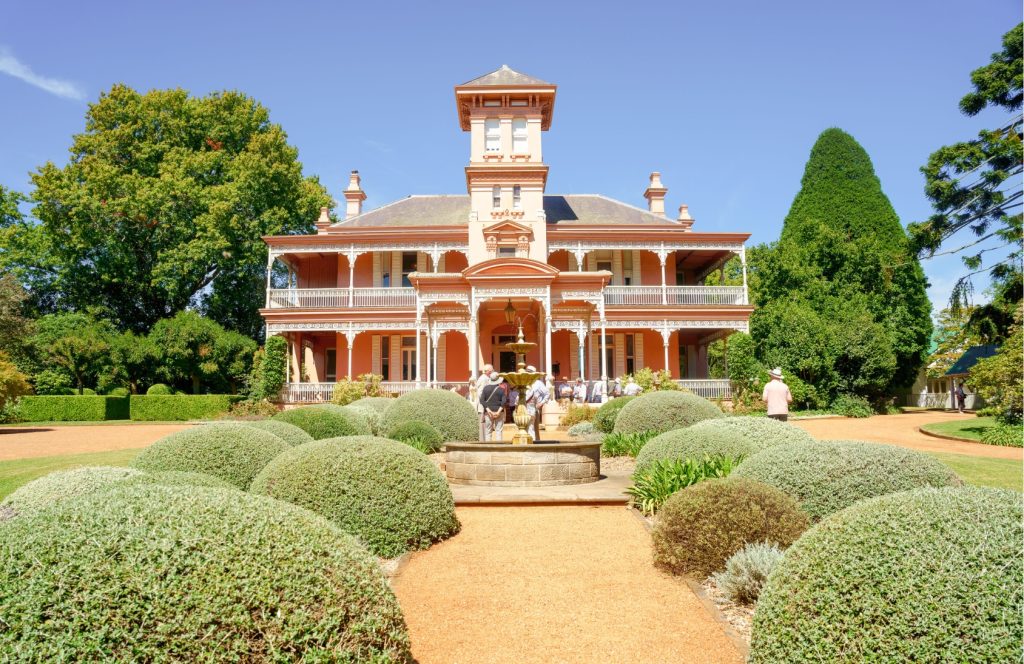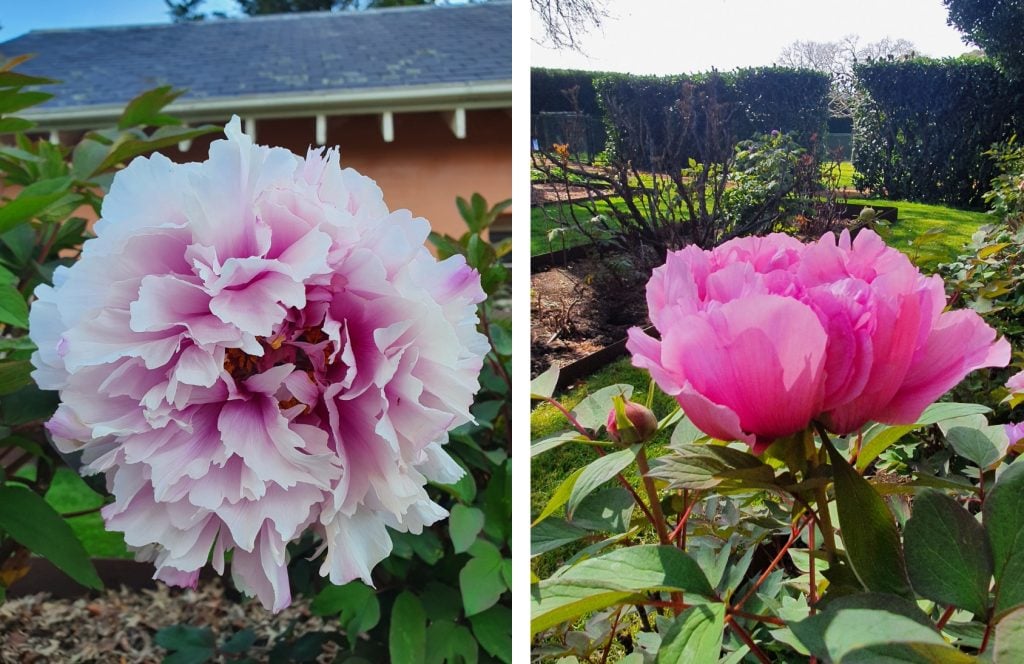October is peony season at Retford Park, the voluminous blooms filling the gardens with colour and scent. We spoke to volunteer Dominic Wong about what to look forward to, when you visit.
Dominic Wong never met James Fairfax AC but you get the impression they might have gotten along famously, the two sharing a great love of peonies. Fairfax filled the gardens of his Retford Park property with dozens of peonies during the 1990s, and Wong is one of the country’s foremost experts on the species, and now volunteers in those same gardens. “The peony is a symbol of prosperity, feminine beauty and hierarchy; in China, it’s known as the ‘King of Flowers’,” Wong says. “Theblooms are so huge and when they flower, it’s the most spectacular sight.” It was while living in Japan in 1947 that Fairfax first encountered these magnificent blooms. Almost 50 years later, in the early 1990s, he commissioned the Melbourne-based landscape architect David Wilkinson to design the Peony Walk at Retford Park and a significant tree peony collection was planted. Many of the plants are still there today.

“If they’re well-planted in well-drained soil with enough sun, peonies can live for 100 years or more,” notes Wong. Wong’s own passion for peonies began decades ago, eventually inspiring a move from Sydney to the Southern Highlands in pursuit of the hot, dry summers and cold winters preferred by the plants. He designed and built the highly regarded private show garden Chinoiserie in Mittagong, where the blooming peonies were one of the major drawcards for visitors. After downsizing to a smaller home four years ago, Wong began volunteering his time and expertise to Retford Park.

One of his first suggestions was to plant herbaceous and Itoh peonies alongside the existing tree varieties. “One of the new plants is called coral charm – it looks spectacular and is one of the easiest herbaceous peonies to grow,” Wong explains. These coral charms bloom in spring, their petals
revealing their namesake coral hue in contrast to the vibrant pinks of the shrubbery tree peonies.
“The month of October is the very best time to see the peonies at Retford Park,” Wong continues. “The Japanese and Chinese varieties will flower first, followed by the American hybrids and finally the coral charm peonies. They are most spectacular in the morning, as the flowers open their petals to the sun.” But Wong cautions not to leave it too late to plan your visit. “Peonies only have a very short flowering time – about three weeks each year – and then they’re gone. But when they’re all in flower, it’s a sight to behold.”

Dominic Wong’s Growing Guide
Expert tips for thriving peonies.
Spring
“Early September is when new foliage growth will start to appear. It begins with a burgundy shade in the leaves, turning to green as they expand and the buds come up. Once the buds have developed into a flowering size, they open up and you enjoy the flowers. “The end of their flowering season usually coincides with the Mebourne Cup. Once they’ve finished flowering, deadhead the plants and feed them with rose fertiliser and blood and bone. The rose fertiliser is absorbed quickly and is rich in potash (a potassium-rich salt), which peonies need for flower production. The blood and bone takes a couple of months to slowly break down, so you have a long feeding period.”
Summer
“Peonies go dormant after they’ve finished flowering – the roots shut down and the plant stops growing. You might give them some supplementary watering if they look droopy but they don’t need much. And don’t worry if the leaves get scorched in very hot weather as they’ll eventually drop off in autumn.”
Autumn
“It might look like nothing is happening on top, but by ANZAC Day the roots will have reactivated, so it’s time to feed them all the nutrients they need, with rose fertiliser, potash, blood and bone and garden lime. Once all the leaves have dropped off in May, it’s time for pruning. Tree peonies require tip-pruning and any dead branches removed, whereas herbaceous varieties need to be cut
back to ground level.”
Winter
“There’s nothing really to do in winter. As long as you’ve fertilised them in autumn, your peonies will have all the nutrients they need to flower again in spring.”

 Facebook
Facebook Linkedin
Linkedin Email
Email